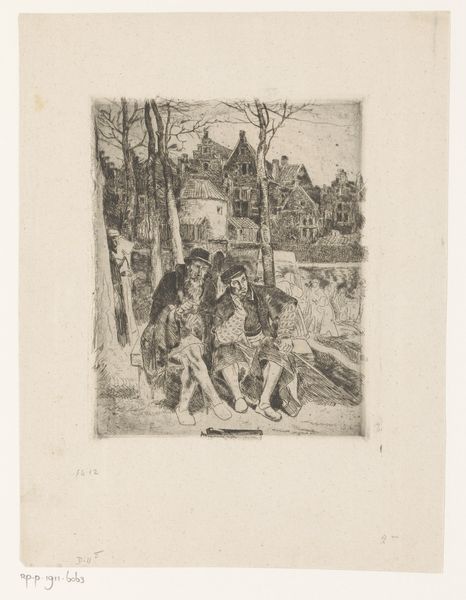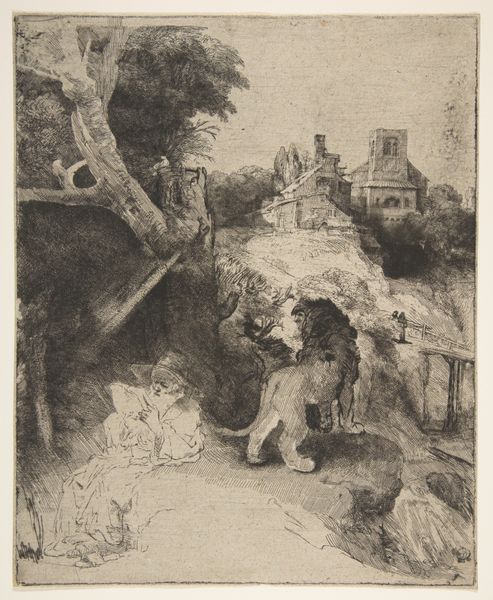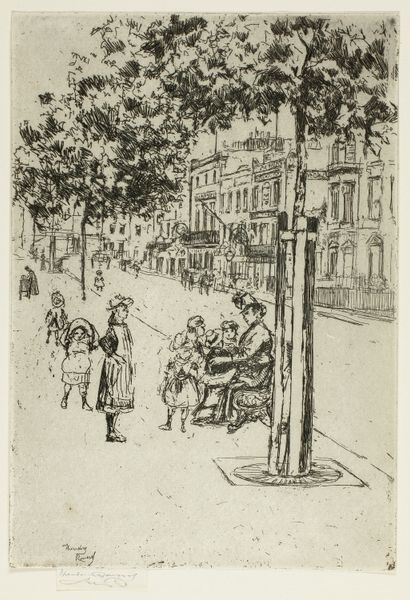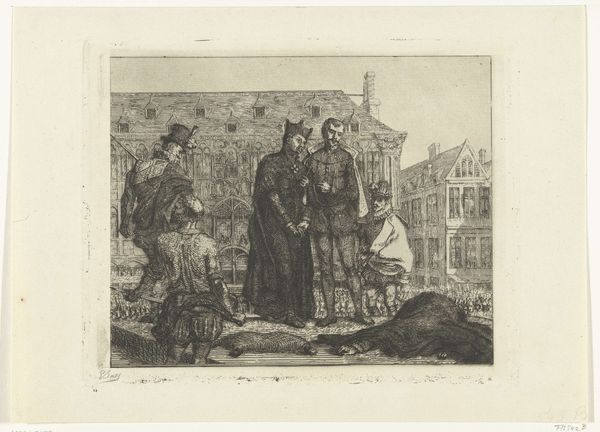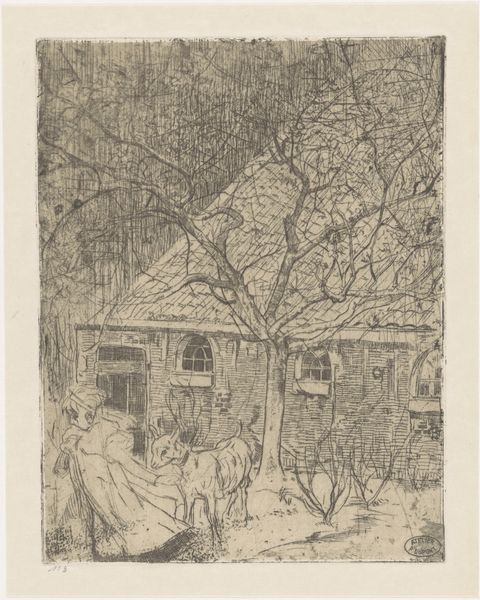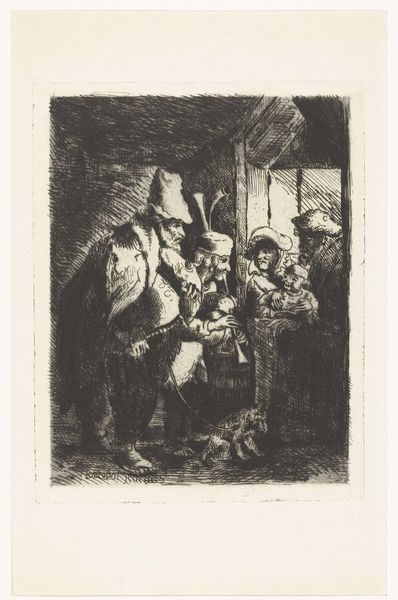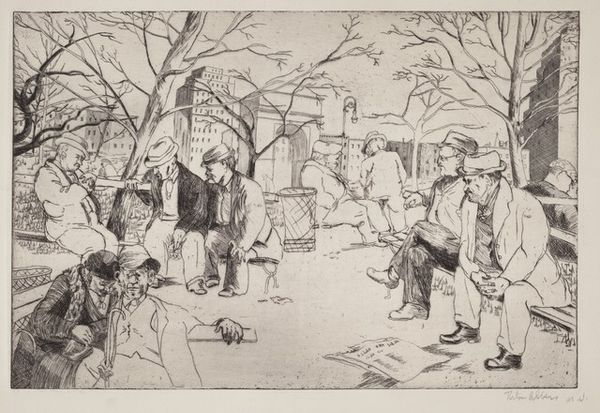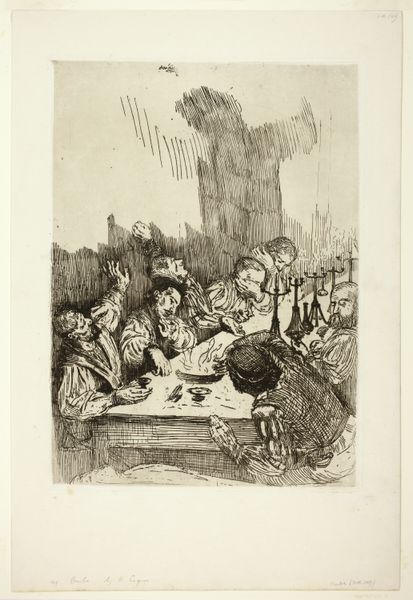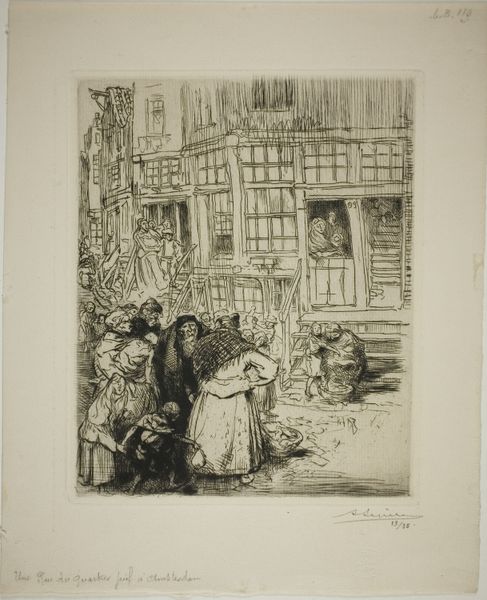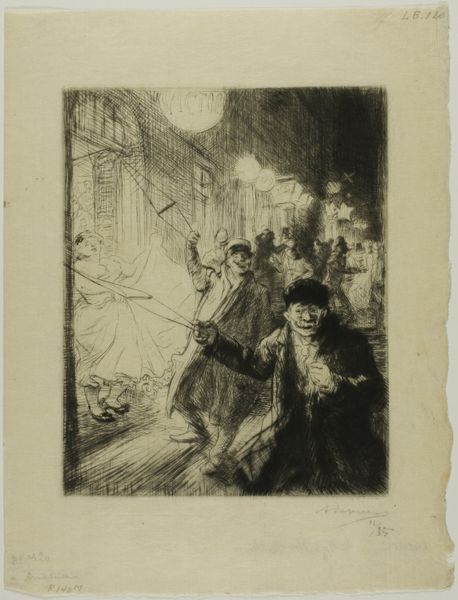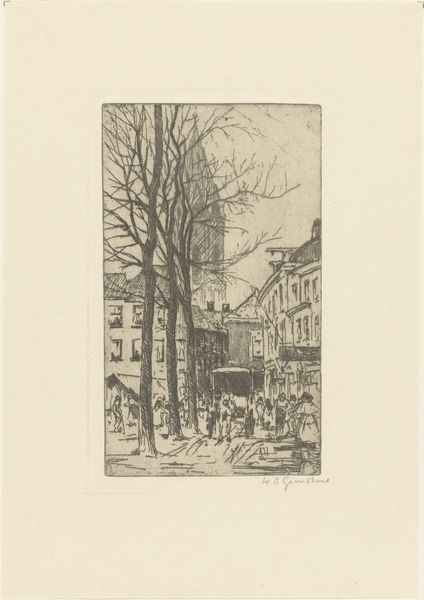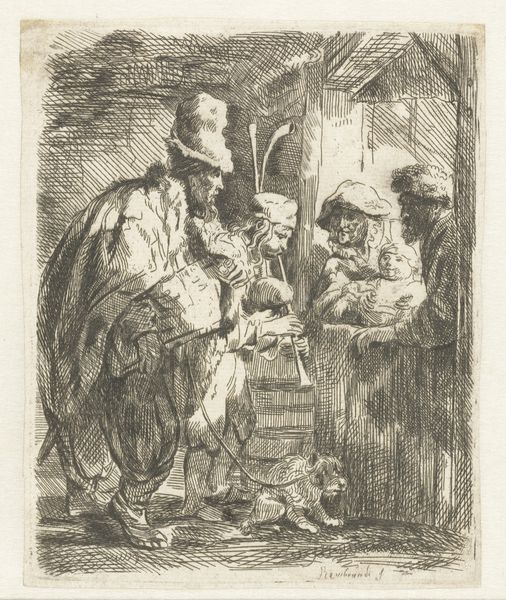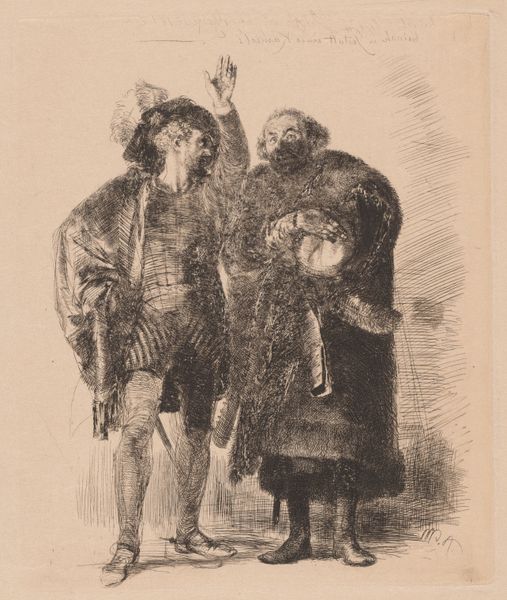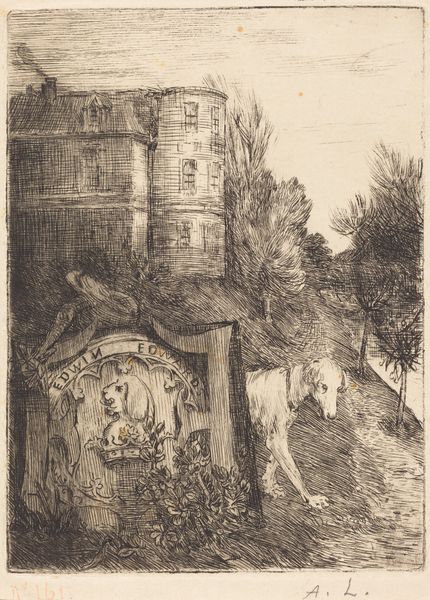
Dimensions: plate: 18.9 x 15.2 cm (7 7/16 x 6 in.) sheet: 27.6 x 23 cm (10 7/8 x 9 1/16 in.)
Copyright: National Gallery of Art: CC0 1.0
Curator: Immediately striking is the stark contrast achieved within the delicate lines of this etching. There’s an intimacy here, despite the very public setting. Editor: It's wonderfully bleak. The skeletal trees against those clustered houses evoke such a palpable sense of… existential weariness. Almost a haunted quality in the everyday. Curator: That's an interesting reading! The print is entitled "Faust and Wagner," completed in 1869 by Henri Leys. What we're viewing is a depiction of Goethe's famous characters, in what appears to be an ordinary town square. Editor: The attire feels consciously symbolic, doesn't it? Faust, older and more distinguished, perhaps representing wisdom accumulated – or maybe knowledge turned to disillusionment. While Wagner appears in somewhat finer garb, a more ornate design, connoting worldly ties that Faust has abandoned. Curator: And there you see the social element emerging; these figures aren’t just literary archetypes – their fashion reads clearly to the nineteenth-century viewer as signifiers of wealth and class standing in direct conversation with notions of scholarly identity and philosophical debate within rapidly changing social structures. The image seems both rooted in Romanticism, yet very much engaged with the period it was created in. Editor: I agree, though it’s fascinating how timeless the central theme is. Aren't we all continually weighing intellectual pursuit versus lived experiences? What's power but a Faustian bargain writ large? Curator: Yes, and notice the use of the town square—a deliberate placement by Leys to draw lines connecting profound, individualized moral struggle with the public eye. Are we doomed to watch the cycles play out? Editor: So many interpretations can rise to the surface in this piece, and yet it remains anchored by those weary gazes and a feeling of historical inevitability. What better symbol than that? Curator: Precisely. Art such as this reveals just how layered history always is; the cultural impact of Goethe playing off the societal context of artistic production to subtly influence what a work is allowed to communicate, across decades.
Comments
No comments
Be the first to comment and join the conversation on the ultimate creative platform.
